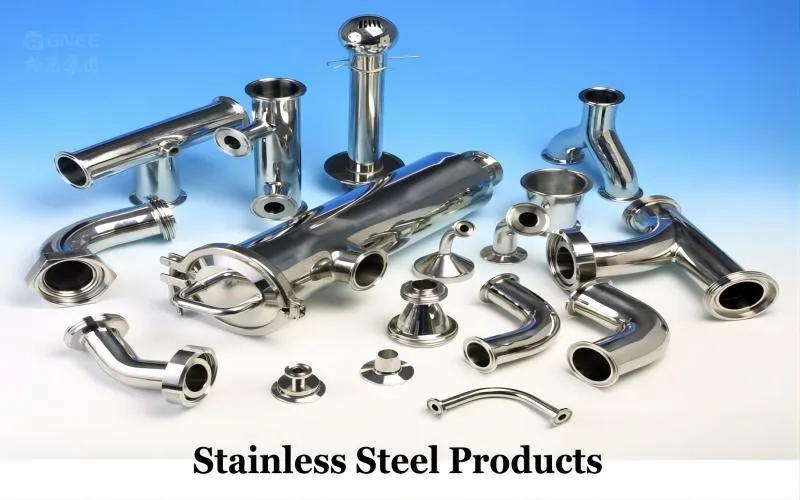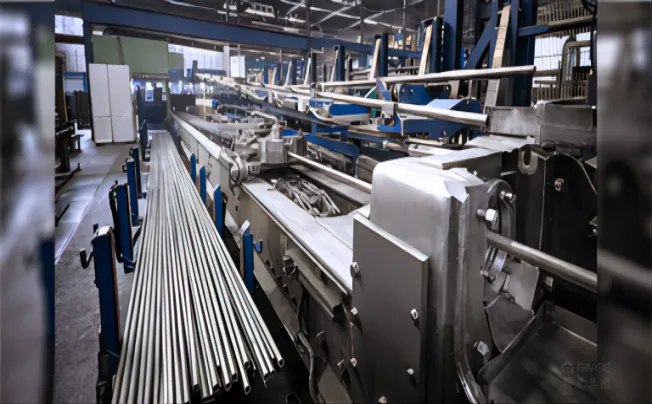Raw Material Testing Methods
Starting with the raw material link is necessary to guarantee the quality of the completed stainless steel pipes. Visual inspection, dimensional deviation detection, chemical composition analysis, mechanical property testing, and other indicators are used in the inspection of raw materials used to make steel pipes. Hardness and spectrometer component detection are two of the more popular detection techniques.
Apart from conducting spectroscopic and hardness testing, stainless steel producers can additionally have to carry out the subsequent additional examinations:
- Analyzing the chemical composition of raw materials is used to ascertain the amount and composition of each element.
- Physical performance testing: this refers to the methods used to assess the mechanical properties of materials, such as bending, impact, and tensile tests.
- Metallographic inspection: used to assess raw materials’ grain structure and look for flaws, inclusions, etc.
- Ultrasonic fault detection: this method looks for internal or surface flaws in raw materials.
- Magnetic particle testing: this method looks for surface cracks in raw materials, among other things.
By ensuring that raw materials fulfill norms and quality requirements, the aforementioned seven testing techniques can assist stainless steel manufacturers in creating high-quality finished stainless steel products.

Methods For Testing Finished Stainless Steel Pipes
Ensuring raw materials fulfill quality needs and standards is the fundamental assurance for high-quality goods. Before we can ultimately make stainless steel products that guarantee product quality and safety, the production process of stainless steel pipes also needs to be tested and polished repeatedly.
The following tests are commonly performed on finished stainless steel pipes: pullout, expansion, hardness, eddy current fault detection, air tightness, and salt spray testing. These tests can evaluate the processability, mechanical strength, durability, corrosion resistance, air and water leaks, surface imperfections, and other elements that are closely monitored to guarantee product quality.
1. To evaluate the corrosion resistance of stainless steel water pipes, they are placed in an area subjected to salt spray. This testing can mimic use in corrosive environments, such as the sea.
2. To make sure there are no air leaks, stainless steel water pipes are subjected to air-tightness testing. You can perform this test by submerging the pipe in water and keeping an eye out for bubbles.
3. The technique known as “eddy current flaw detection” makes use of the electromagnetic induction principle to find surface imperfections and fractures in water pipes made of stainless steel. With remarkable accuracy, this technique can identify minute flaws in the pipe’s surface.
4. A material mechanics testing technique called pull-out testing is used to assess the elastic and mechanical strengths of stainless steel water pipes. This test can determine the mechanical parameters that correspond with the stress and strain experienced by the water pipe during the stretching operation.
5. The flare test is used to assess the processability and robustness of water pipes made of stainless steel, primarily to determine how much weight the pipe ends can support.
6. One way to gauge the hardness of stainless steel water pipes is through hardness testing. Usually, a hardness metre is used for the task. Hardness, which measures a material’s resistance to abrasion and deformation, is frequently used to assess a material’s mechanical strength and longevity.

Why Should We Test the Stainless Steel Pipe Production Process?
- Testing aids in quality assurance by ensuring that stainless steel pipe satisfies the requirements for quality standards and specifications. Manufacturers can find any flaws or variations in the production process that could impact the pipe’s quality by carrying out a variety of tests.
- Safety: Grades 304, 309, 316L, and other common stainless steel pipes are available. They are employed in numerous industries, including chemical processing, oil and gas extraction, and building. Testing lowers the chance of failure or accident by ensuring that pipes are structurally sound and able to endure typical operating circumstances.
- Evaluation of performance: Testing enables producers to assess the strength, durability, and corrosion resistance of stainless steel pipes, all of which are essential in deciding if the pipe is appropriate for a certain application.
- Respect industry standards: Stainless steel pipe is usually produced following industry standards and laws. Testing ensures compliance and fosters pipelines’ market adoption by confirming that they adhere to these criteria.
- Process Improvement: Testing gives producers insightful input on their manufacturing procedures, enabling them to pinpoint areas in need of development. Manufacturers can enhance productivity, cut expenses, and optimize their operations by evaluating test data.


